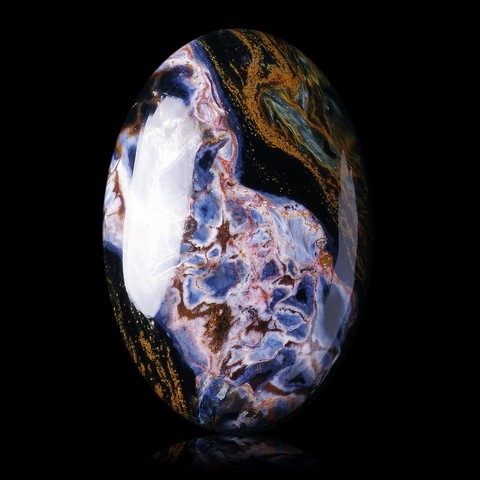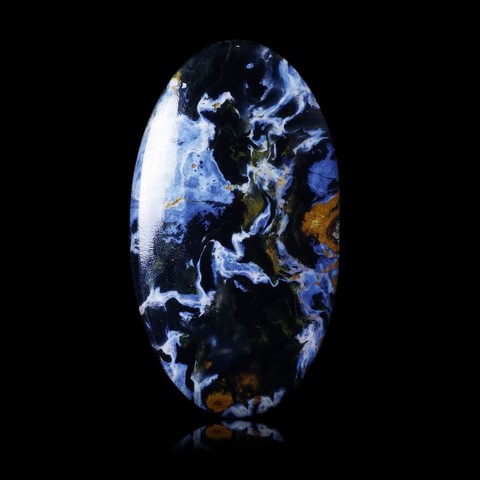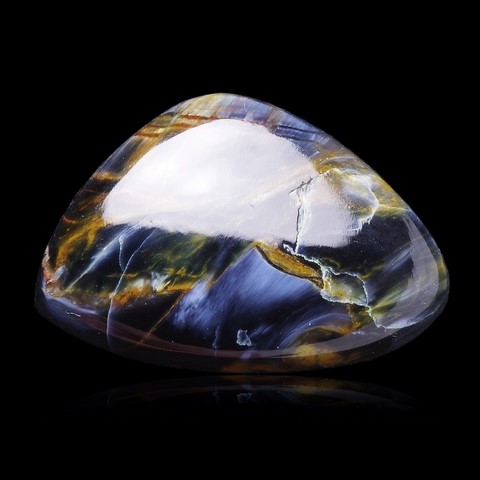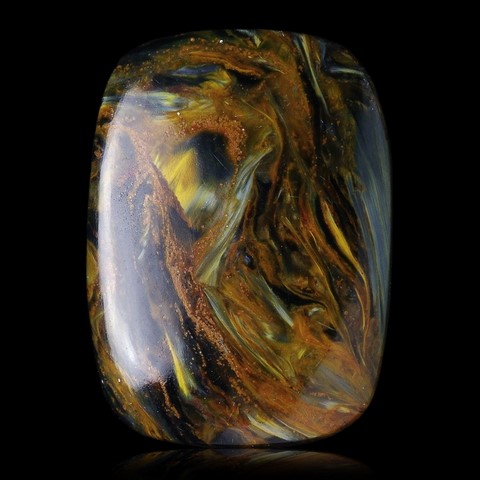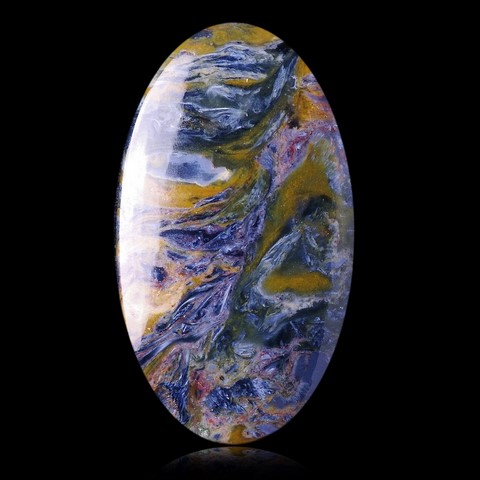PIETERSITE
Class : Silicates
Subclass : Tectosilicates
Crystal System : Trigonal
Chemistry : SiO2
Rarity : Rare
Pietersite is a variety of chalcedony mixed with amphibole fibers with varying degrees of weathering. The fibers are responsible for a beautiful gray-blue, brown or yellow chatoyancy, similar to that of the tiger's-eye. However unlike the tiger's-eye, which is a variety of macro-crystalline quartz, pietersite is a chalcedony. It owes its name to Sid Pieters who first described it in Namibia in 1962. It is a popular ornamental material and is frequently cut in cabochon for jewelery.
Pietersite in the World
Pietersite comes mainly from Hopewell Farm 240 (Pietersite Mine), Outjo, Kunene Region in Namibia, the type-locality that produced blocks of several hundred kilograms. More recently, this variety of chalcedony has also been found in Nanyang, Henan Province, China.
Pietersite in France
Pietersite is not present in the French underground.
Fakes and scams
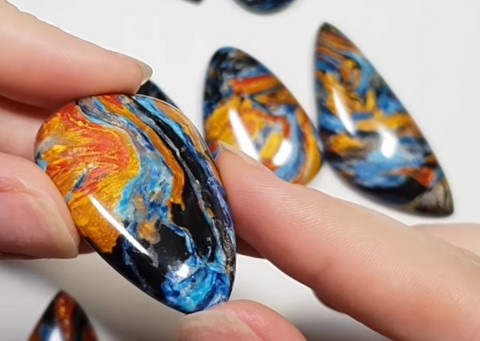
A resin imitation type "Fimo paste" exists on the market, but the stones have neither the thermal conductivity nor the density of true pietersite. The shades of this imitation are also much more garish than natural pietersite (see photo on the left) and there is no chatoyancy. These imitations are currently very rare on the market.
Hardness : 6,5 to 7
Density : 2,6
Fracture : Conchoidale to sub-conchoidale
Trace : White
TP : Opaque
RI : 1,54 to 1,55
Birefringence : -
Optical character : Uniaxial +
Pleochroism : None
Fluorescence : None
Solubility : Hydrofluoric acid
Magnetism : None
Radioactivity : None

